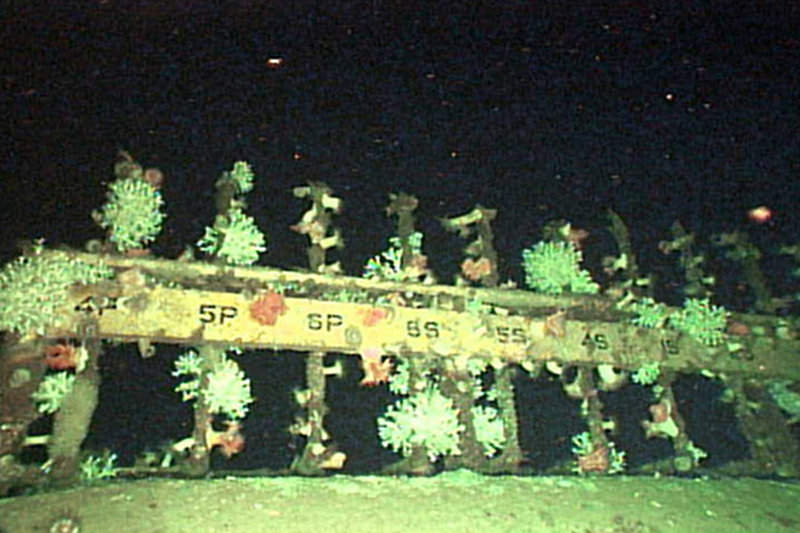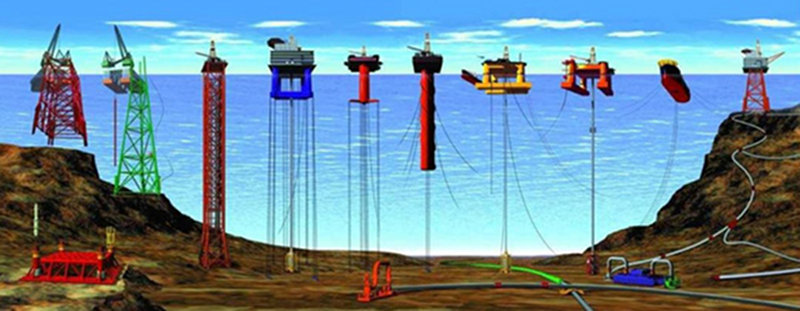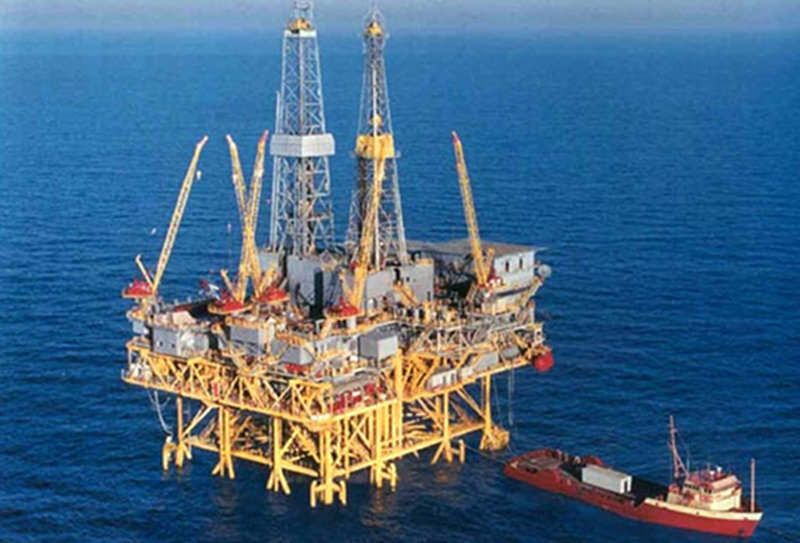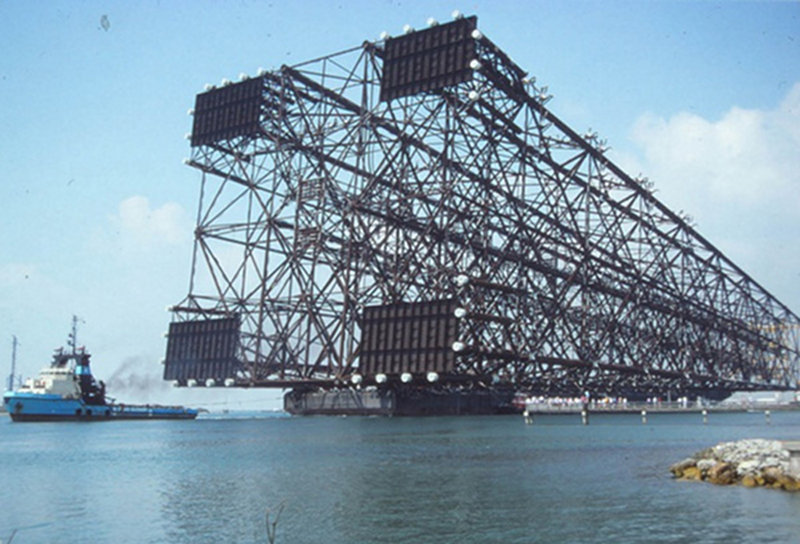
By Greg Boland, Biological Oceanographer - Bureau of Ocean Energy Management

This image shows how much Lophelia corals first identified in 2003 grew since installation of the structure in 1994. Pictures such as these can be used to calculate the minimum growth rate required to get this big in nine years. Image courtesy of Lophelia II 2012 Expedition, NOAA-OER/BOEM. Download larger version (jpg, 436 KB).
This Lophelia II expedition is focused on the documentation and sampling of coral communities growing on deep-water oil and gas platforms. This essay will describe some of the variety of platform types in the deep Gulf of Mexico and show what some of them look like.
Hard substrate created by human-made structures in deep water represents potential new habitat for deep-water corals. These artificial substrates include both shipwrecks on the sea bed (also a component of the Lophelia II study) as well as offshore oil and gas platforms.
At the time of this writing, there are presently only 50 out of a total of 3,192 structures in the Gulf of Mexico in water depths of 300 meters or greater (the approximate upper depth limit for Lophelia). You can query information about structures in the Gulf, including statistics for both existing and removed (decommissioned) structures by depth, date, area, block company name, and other variables online.
This illustration shows the variety of major platform types. Image courtesy of the Bureau of Ocean Energy Management (BOEM). Download larger version (jpg, 576 KB).
Lophelia coral colonies were first recognized on a deep-water platform during a NOAA Office of Ocean Exploration and Research expedition cruise led by John Reed from the Harbor Branch Oceanographic Institute in 2003. The observations were made on the Pompano structure located in a bottom water depth of 400 meters. The cruise was highlighted as an NOAA Ocean Explorer Signature Expedition. Additional images were obtained by industry in 2009 and we know there is a lot of continued growth of deep-sea corals on the platform.
There are a variety of major platform types found in the Gulf of Mexico. These include solid bottom-founded platforms, tension leg platforms (TLPs), and a variety of floating types using anchors to hold them in position.
Most people may be familiar with the solid bottom-founded platform. This kind of structure is basically a lattice of steel support structures. Some platforms in shallow water can have as few as one single support leg, but more common is three, and often four, eight or even more vertical legs (12 for the record largest structure Bullwinkle).
Multiple-leg structures of this type flare out as they approach the bottom (becoming larger at the ocean floor than they are at the surface) and include horizontal components and also diagonal supports.
Several of these types of platforms are targeted for this cruise, including the incredible Bullwinkle platform. This platform is 530 meters high; tall enough for the Eiffel Tower to fit underneath it with 205 meters to spare. At the time of installation in 1988, it was the second-tallest manned structure ever built. It is located in a water depth of 420 meters. The Pompano platform mentioned above is also a solid bottom-founded structure.

Example of a solid bottom-founded platform in the Gulf of Mexico. Image courtesy of the Bureau of Ocean Energy Management (BOEM). Download image (jpg, 109 KB).

Example of a solid bottom-founded platform in the Gulf of Mexico. Image courtesy of the Bureau of Ocean Energy Management (BOEM). Download image (jpg, 111 KB).
A variation on the solid bottom-founded platform type is a compliant tower. This kind of structure is designed to flex in waves and water currents and has bottom dimensions below the surface essentially the same as those above water, basically a narrow cage.
We have two TLP structures as possible targets for investigation during this cruise. One was the first TLP installed in the Gulf of Mexico in 1989, called Joliet. It is at a water depth of 543 meters.
The surface structure of a TLP is essentially floating, but instead of being anchored with a widely spaced array of anchors, it is held in place by a series of tendons or heavy pipes that are secured to a template on the seabed directly under the surface structure. Each cluster of these tendons is called a tension leg.
We have one structure among our potential targets that is a floating platform called a spar. It is basically a huge hollow tube that provides flotation for everything sitting on top. It is secured to the bottom with very large diameter synthetic rope or chain to at least 9-12 very large anchors or piles in the muddy seabed. These anchors can be located over a mile away in each direction depending on water depth.
The spar platform that is part of the Lophelia II study is called Neptune. It is located at a water depth of 595 meters, not far from the intensively studied VK826 natural Lophelia habitat.